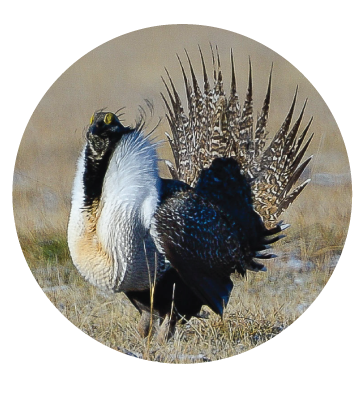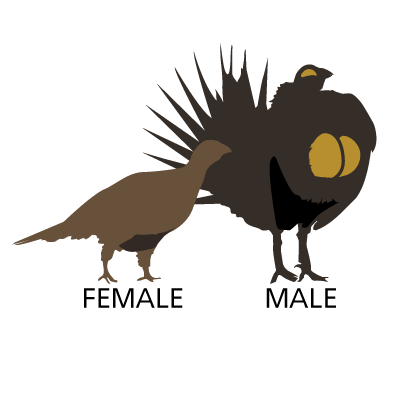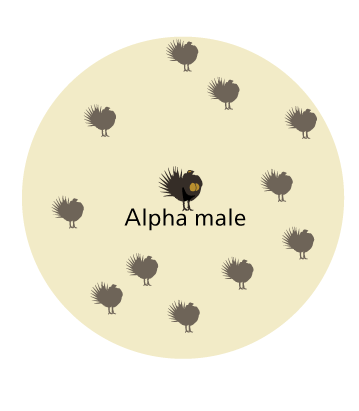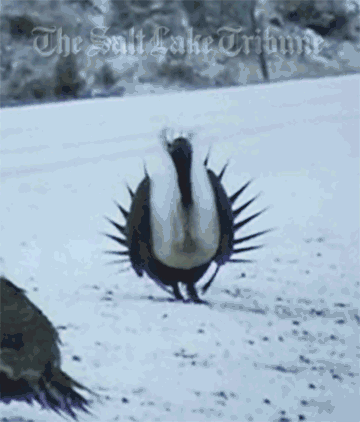Greater sage-grouse
In 2010 the U.S. Fish & Wildlife Service determined the greater sage-grouse warranted listing as a threatened species.
Utah, Idaho, Montana, Oregon, Colorado, Nevada and Wyoming formulated their own plans in an effort to stave off a listing that would inhibit mineral development, drilling and other activities in sage-grouse habitats.
In September 2015, the U.S. Department of the Interior decided that conservation plans developed by the BLM, coupled with state efforts, are sufficient to preclude sage-grouse from protection under the Endangered Species Act.

Basic facts
SIZE: Males are about twice as large as the female with an average weight of 6 lbs.
DIET: Mostly sagebrush but will eat other plants as well as insects.
HABITAT: Large, open sagebrush areas in 11 states and 2 Canadian provinces.
CHICKS: Hens will lay 6-10 eggs in nests hidden under sagebrush.
LIFESPAN: Average lifespan is 1 to 3 years. Some have lived up to 9 years in the wild.
Sources: Fish and Wildlife Services, sagegrouseinitiative.com, defenders.org

Population
The sage-grouse population within sage grouse management areas (SGMAs) grew by 39.6% this year over last.

What is a lek?
A lek is a breeding ground for courtship where females choose a mating partner from an array of dancing, strutting males. Leks can be as large as 40 acres.
The males will try to attract the females by making popping sounds while fanning out their tails and puffing out the yellow sacs on thier chests.
The males defend their position within the lek with the dominant males taking up a central position. Females will usually mate with the dominant males.
Sources: Fish and Wildlife Services, sagegrouseinitiative.com, defenders.org, topbirdingtours.com

Plan for Utah
Designate 2.7 million federal acres as "priority habitat" where stringent limits on development are imposed and another 500,000 acres as "general habitat," where the sage-grouse protections are not as strict.
Subject energy development to "no surface occupancy" in priority habitat.
Cap surface disturbance at 3 percent of any habitat area.
Require public lands ranchers to adhere to grazing practices that don’t deplete the range inside priority habitat.

What's next?
Utah will seek to overturn the BLM's plan, through litigation and the $2-million-a-year lobbying efforts of Ryan Benson.
Two Nevada counties are suing over the decision.
Idaho's governor is planning a suit.
Sage-grouse populations in Utah will continue to improve with continued habitat management, scientists believe.
